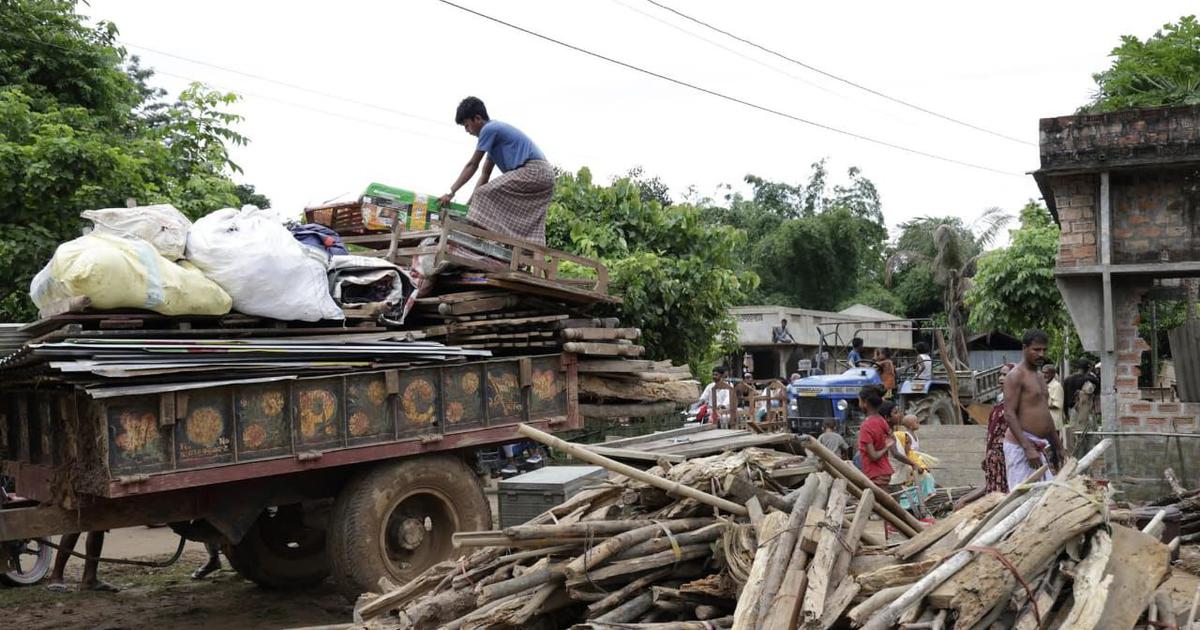
By Ishfaq- ul- Hassan
Srinagar–Anger is brewing in Jammu and Kashmir after Delimitation Commission proposed redrawing several assembly and parliamentary constituencies.
The panel has proposed to create seven new assembly segments. A new parliamentary constituency comprising Anantnag, Kulgam, Shopian from Kashmir region, and Rajouri and Poonch from the Jammu region, has been proposed. It will have 18 assembly segments. Rajouri Poonch was earlier part of the Jammu parliamentary constituency. Now it has been added to south Kashmir parliamentary seats.
There will be no effect on the number of parliamentary seats. Only realignment has been done. The erstwhile state of Jammu and Kashmir had six Lok Sabha seats –two in Jammu, three in Kashmir, and one in Ladakh.
Ladakh has become a union territory. Now there will be five seats. Muslim majority districts of Jammu will now be part of Muslim-dominated Kashmir. So technically, Jammu parliamentary seat will now comprise the Hindu majority districts of Jammu. Two assembly seats of Rajouri district–Kalkote and Sunderbani—which has a Hindu majority will be part of the Jammu Lok Sabha seat
Srinagar parliamentary seat too has been redrawn. Four assembly segments of south Kashmir’s Pulwama district and one from Shopian have been added to the Srinagar seat. Earlier Pulwama and Shopian were part of the Anantnag Lok Sabha seat.
Similarly, the Budgam district with five assembly seats will now be part of the Baramulla Parliamentary constituency. Earlier it was part of the Srinagar constituency.
Likewise, the existing assembly seats have been redrawn and new seats created. Shangus constituency has been divided between Anantnag East and Larnoo segments in South Kashmir. New Chanpora constituency has been created in Srinagar, Homeshalibug seat in south Kashmir’s Kulgam district has been abolished.
Safapora of the Sonawari constituency will now be part of the Ganderbal segment. Ajas, presently part of Bandipora constituency, has been added to Sonawari
Srinagar’s Habba Kadal, which always saw the lowest turnout, has been abolished. It will now be added to three assembly constituencies. The number of Assembly seats in Jammu and Kashmir will now go up from 83 to 90. In the erstwhile assembly, Kashmir had 46 seats, Jammu 37, and Ladakh four. Now Jammu will have 43 seats and Kashmir 47 seats.
National Conference president Farooq Abdullah, who was one of the associate members of the Delimitation Commission on Jammu and Kashmir, said the report “defies any and all logic” and no political, social, and administrative reason can justify the recommendations.
“There is no political, administrative, and social logic that justifies these recommendations. We were told that a delimitation exercise was being undertaken to make assembly seats contiguous with the district. But the draft report is showing a different picture altogether. Like Anantnag Lok Sabha seat in South Kashmir will have six assembly seats from Rajouri and Poonch, which are part of the Jammu division and located across the Peerpanjal range,” Abdullah said.
Peoples Democratic Party said the panel has “proved itself to be as a frontal organization of ruling Bhartiya Janta Party.” “From the media reports regarding the interim recommendations of the commission, it was clear that the sole objective of the body was to ensure backdoor entry of BJP and its shadow organizations to the Legislative Assembly of Jammu and Kashmir,” an official spokesman of the party said.
CPI(M) leader Mohamad Yousuf Tarigami said the draft proposal of the Delimitation Commission has recommended a strange geographical layout for redrawing the boundaries of several parliamentary and assembly constituencies in Jammu and Kashmir.
“The draft proposal shared by the Commission with its associate members—as media reports suggest—seems even incongruous with the Commission’s earlier argument of taking into account the topography and difficult terrain while re-mapping the poll constituencies. The Commission has proposed an arbitrary overhaul in the existing territorial constituencies with no regard for even the terrain, let alone the population that tends to be a basic parameter for redrawing the boundaries of assembly and parliamentary segments,” he said.
This story first appeared on indiatomorrow.net






